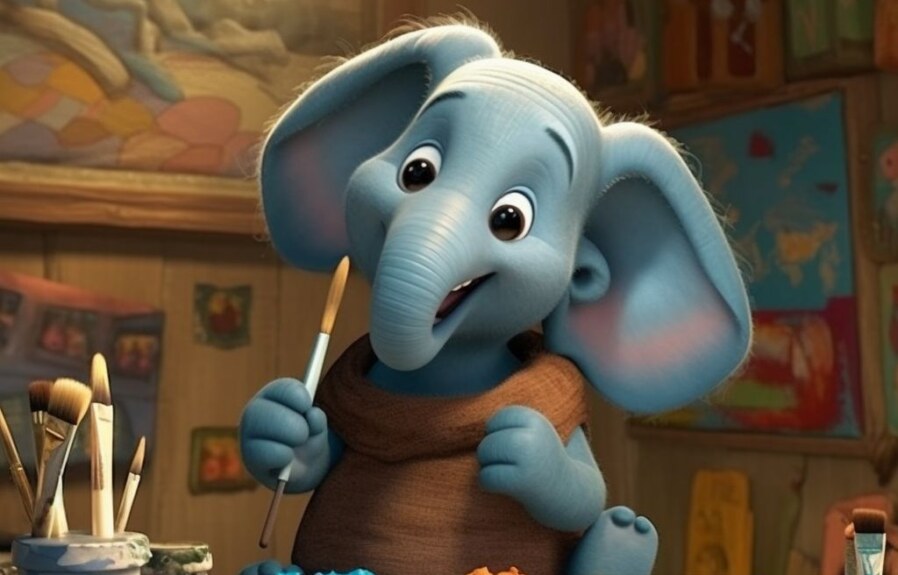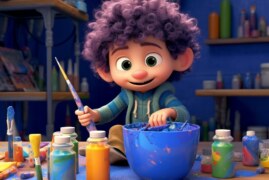Teeth are one of the most challenging features to draw while sketching a portrait or caricature. Drawing them artistically requires understanding the structure, anatomy, and placement of teeth in the mouth. Without proper knowledge, teeth can make or break the entire artwork. Whether you’re an illustrator or an art enthusiast, learning to draw teeth can elevate your skills and make your characters more realistic. In this article, we will take a deep dive into the art of drawing teeth and provide some tips and tricks to make your next drawing stand out.
1. Introduction to Drawing Teeth: An Essential Guide for Artists
Drawing teeth may seem like a small detail, but it can make a huge difference in the overall impression of a piece of art. To truly capture the essence of a character or subject, it’s important to master the art of drawing teeth. This guide will provide essential tips and techniques for artists looking to improve their skills and create stunning pieces of art.
Understanding Teeth Anatomy: Key Components to Consider While Drawing
Before diving into drawing teeth, it’s important to understand the key components that make up these unique features. Teeth are made up of the crown, which is the visible portion of the tooth, and the root, which is hidden beneath the gum line. Additionally, teeth have various shape and size variations, such as incisors, canines, premolars, and molars. By understanding the anatomy of teeth, artists can create more realistic and accurate depictions.
Sketching Different Types of Teeth: Tips for Creating Realistic Results
To accurately sketch teeth, it’s important to observe and study a variety of different types. This includes looking at reference images, observing the teeth of people around you, and experimenting with different angles and perspectives. Additionally, it’s important to focus on capturing the unique features of each type of tooth, such as the curvature of a canine or the flatness of a molar. By practicing these techniques, artists can create more realistic and detailed drawings of teeth.
2. Understanding Teeth Anatomy: Key Components to Consider While Drawing
Understanding the anatomy of teeth is crucial to drawing them accurately. The human mouth is complex, with different types of teeth performing specific functions. This section will provide an overview of the key components of teeth anatomy that artists should consider while drawing.
Tooth Structure
The tooth has three main parts: the crown, neck, and root. The crown is the visible part of the tooth that protrudes out of the gum line. The neck is the area where the crown meets the root. The root is the part of the tooth that is embedded in the jawbone.
Types of Teeth
There are four types of teeth in the human mouth, each with its own shape and function. Incisors are the front teeth used for biting and cutting food. Canines are the pointed teeth used for tearing food. Premolars are rounded teeth that grind and crush food. Molars are the largest teeth in the mouth used for grinding the food and are located at the back of the mouth.
Teeth Placement
When drawing teeth, it’s essential to consider the placement of teeth in the mouth. Teeth are not all the same size, and they are not evenly spaced. For instance, the front teeth are larger and closer together than the back teeth. Understanding tooth placement is important in creating a realistic and convincing drawing of teeth.
By taking these key components of teeth anatomy into consideration, artists can create more realistic and believable drawings of teeth. In the next section, we will discuss tips for sketching different types of teeth.
3. Sketching Different Types of Teeth: Tips for Creating Realistic Results
Drawing teeth can be challenging for artists, especially if you don’t know how to go about it. The basic form of the tooth may look simple, but teeth come in various shapes and sizes. In this section, we’ll provide you with helpful tips for sketching different types of teeth and creating realistic results.
Know Your Teeth
Before you start drawing different types of teeth, it’s essential to understand the basics of tooth anatomy. Teeth are made up of several parts that include enamel, dentin, pulp, and cementum. Each part plays a vital role in the overall structure and appearance of the tooth.
There are different types of teeth in the human mouth, and they vary in size, shape, and function. For instance, the front teeth (incisors) have a sharp edge that helps us bite into food. The canine teeth are pointy and are used for tearing food, and the molars have a broad surface area that allows us to chew and grind food. Understanding the different types of teeth will help you create realistic drawings.
Use References
To create realistic teeth drawings, you need to study the teeth closely. Observing real-life references or photographs can help you understand the various shapes, sizes, and variations of teeth. Pay attention to how the teeth are arranged, the spacing between them, and the angles at which they are positioned.
It’s also essential to pay attention to the lighting and shadows that fall on the teeth. The shading and highlights on the teeth play a crucial role in creating a dramatic effect and enhancing the realism of your drawing. Use reference images to guide you through the shading process and to help you create a three-dimensional effect.
Practice Sketching Different Types of Teeth
Practice is essential if you want to improve your teeth drawing skills. Sketch different types of teeth and experiment with different angles and perspectives. Try drawing teeth in a variety of styles, such as photorealistic, stylized or cartoonish, and see which style you feel most comfortable with.
You can also try drawing teeth from different viewpoints, such as above, below, and from the side. This allows you to see the teeth from various angles, and it helps you understand the structure and shape of the tooth better.
By following these tips, you’ll be able to sketch different types of teeth with ease and create realistic results that will add to the overall quality of your artwork.
4. Adding Dimension and Texture to Teeth: The Art of Shading
Adding dimension and texture to teeth is an essential aspect of drawing; it can distinguish between a two-dimensional drawing and a lifelike one. Shading is the best way to give form and depth to your teeth drawing. You can do this by using a range of values, which means the different levels of lightness and darkness in your drawing. The whiter parts of the teeth should be left empty, whereas the shadows should be darker.
To start your shading, determine where your light source is coming from. This helps you decide where the dark and light areas should be placed. For example, if the light source is coming from the right, the left side of the teeth should be darker.
It is also essential to vary your shading. Teeth are not flat, so their shading should not be flat either. Some teeth have ridges, grooves or bumps, which require different types of shading. Additionally, teeth should be shaded consistently, so all the teeth look the same in terms of shading.
Finally, don’t forget to play with texture to give more life to your teeth. Teeth are not perfectly smooth, and they have subtle lines, cracks, and dots that can be conveyed with your shading. With all these details, your teeth drawing can be realistic and detailed.
- Use different values to give depth to your teeth shading.
- Determine your light source to decide where to place the shadows.
- Vary your shading to show the different textures of teeth.
- Add in details such as cracks and lines to give more realism to your teeth.
Pro Tip: Always start with light shading and gradually build up to darker shades. This allows you to see how the image is developing and how the shading looks.
5. Common Mistakes to Avoid When Drawing Teeth: Tips for Polishing Your Skills
Drawing teeth can be challenging for many artists, but with practice and patience, it can become a skill that sets your artwork apart. However, there are common mistakes that many artists make while drawing teeth that can affect the final result. In this section, we will discuss some tips to avoid these common mistakes and polish your skills in drawing teeth.
Mistake 1: Overemphasizing the shine
One of the common mistakes while drawing teeth is to overemphasize the shine or gloss of the teeth. Teeth are not entirely shiny, so avoid drawing them as a solid white block. Instead, try to create some shadows and variations in color to make them look more realistic. You can achieve this by using a light layer of shading with a light grey or cream color pencil.
Mistake 2: Ignoring the shape and positioning
Another mistake many artists make is ignoring the shape and positioning of the teeth. Each tooth has a different shape, angle, and position in the mouth. As an artist, it is essential to study the anatomy of the teeth thoroughly before drawing them. Pay attention to the shape, size, and position of the teeth in the mouth.
Mistake 3: Drawing teeth in isolation
Many artists draw teeth as individual teeth, which can make them appear detached instead of part of a complete mouth. To avoid this mistake, try to draw the teeth in context with other features of the mouth, such as gums, lips, and tongue. This will create a sense of depth and realism.
By avoiding these common mistakes and paying attention to the details, you can improve your skills in drawing teeth. Remember, practising and experimenting with different techniques is the key to mastering this art. Keep learning and perfecting your skills, and soon you’ll be able to create dazzling artworks that showcase your skills in drawing teeth.
6. Further Steps to Enhance Your Skills: Practicing and Experimenting with Teeth Drawing Techniques
Exploring Teeth Drawing Techniques
Now that you have covered the basics of teeth anatomy and have learned tips for creating realistic results, it is time to enhance your skills by practicing and experimenting with different teeth drawing techniques. Here are some helpful tips on how to do so:
1. Experiment with different pencil types and textures
Using different pencils and textures can add depth and realism to your teeth drawings. For example, a softer pencil can create softer lines, while a harder pencil can create crisp and defined lines. Experiment with different types of pencils and textures to add variety and interest to your artwork.
2. Practice sketching different angles and expressions
Sketching teeth from different angles and expressions can help you develop your skills and create more dynamic drawings. Use photo references or live models to practice sketching teeth in different angles and expressions. This will help you understand how to adjust the shape and position of teeth to match the expression of the subject.
3. Study the work of other artists
Studying the work of other artists can help you learn new techniques and gain inspiration for your own work. Look at the work of artists who specialize in drawing teeth, and take note of their style, techniques, and approach. You can also join online art communities to share your work and get feedback from other artists.
By practicing and experimenting with different teeth drawing techniques, you can continue to enhance your skills and create dazzling artworks. Remember, drawing is a continual learning process, and the more you practice, the better you will become. So, keep exploring and experimenting with your teeth drawings!
7. Conclusion: Mastering the Art of Drawing Teeth for Dazzling Artworks
In conclusion, mastering the art of drawing teeth requires patience, attention to detail, and practice. By understanding the anatomy of teeth, sketching different types of teeth, and adding dimension through shading, artists can create compelling and realistic teeth in their artwork.
One helpful technique for perfecting teeth drawing skills is to practice different angles and positions. Experimenting with various tooth shapes and sizes can also enhance your skills and help you develop your own unique style. By incorporating teeth into your artwork, you can add depth, dimension, and personality to your characters.
Another valuable piece of advice is to avoid common mistakes, such as making teeth too symmetrical or failing to consider the gum line. Paying attention to small details can make a big difference in the realism and impact of your dental artwork.
In summary, drawing teeth may seem daunting at first, but with practice and perseverance, artists can master this essential skill. By understanding the anatomy of teeth, sketching different types of teeth, adding dimension through shading, and avoiding common mistakes, your dental drawings will dazzle and impress. So go forth, artists, and sink your teeth into this challenging yet rewarding aspect of anatomy drawing!
People Also Ask
1. How do you draw teeth realistically?
To draw teeth realistically, first sketch the outline of the jaw and the position of the mouth. Draw the gum line and use curved lines to create the shape of the teeth. Add shading and highlights to create a 3D effect.
2. What are some tips for drawing teeth?
Drawing teeth can be tricky, but some tips can help. Try to draw with light pencil strokes and build up gradually. Observing photos of teeth up close can help you visualize the details. Remember to leave some space between the teeth.
3. How do you shade teeth?
Shading is crucial when drawing teeth, as it adds depth and texture. To shade teeth, start with a base layer of light pencil strokes. Use a darker pencil or shading tool to create the shadow under the gum line and add shading to the side of each tooth.
4. How do you draw different types of teeth?
Different types of teeth have distinct shapes and sizes. To draw different types of teeth, start by identifying the tooth shape you want to draw, such as a canine tooth. Use curved lines to sketch the tooth’s shape and add shading and highlights to create the texture.
5. How do you draw teeth in a cartoon style?
When drawing teeth in a cartoon style, simplify the shape of the teeth and exaggerate their proportions. Use a curved line to create a smile shape, and add a few teeth in the top and bottom row. For an even more exaggerated style, draw sharp fangs or buck teeth.
Conclusion
Drawing teeth can be a challenging task, but with some practice and tips, it can be done realistically, or in a cartoon style. Remember to observe the details, use shading and highlights, and experiment with different styles and shapes to create a unique smile.



